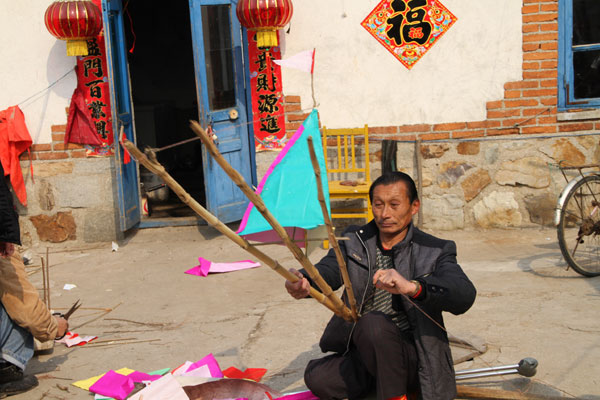Paper boats, ahoy!
 |
|
Xu Yonggui, an inheritor of the local intangible cultural heritage, makes sea lamps in the yard of his home.[Photo by Ding Wangjing/China Daily] |
Located on the southern tip of the Liaodong Peninsula, Dalian boasts a coastline of 1,906 kilometers. Local folk have been making sea lamps for the goddess' birthday for at least 200 or 300 years, according to local cultural officials. The tradition was likely brought to the region by migrants from Shandong province, who prayed to the goddess and offered sacrifices to ancestors who died in shipwrecks.
While the titles (the goddess is known as Mazu in the southeasten coastal areas), practices and times to celebrate the goddess vary, Chinese fishermen along the entire coast are loyal to her.
Zhou Guoliang, 87, claims that on three occasions during his 54 years of fishing life he has experienced the grace of Haishen Niangniang.
The first time, when he was in his 40s, his boat was being swallowed by the huge waves of a severe storm.
"It was totally dark. We had no idea where to go," Zhou recalls. "In desperation, all of us on board made reverent petitions to Haishen Niangniang.
"Then, we found a lamp on the top of the mast. It lit up the way ahead. And with its guidance, we arrived at the seashore safely."
Zhou believes the goddess put the lamp on the mast. He says her blessing helped him survive many hard decades when there was no weather forecasting, radar or any the modern tools of communication.
"In the past, there were lots of stories about endangered fishermen being saved by a light. By and by, it became myth," says Jiang Zhongli, chief of the cultural center at Wangjia township, also known as Haiwangjiudao (meaning nine islands of the king of the sea).














